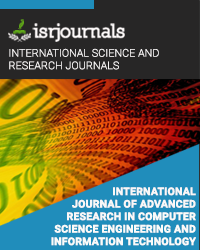multilevel cryptosystem for authorized deduplication in hybrid cloud
Narasimhulu.P,Jayavarthini.C
Published in International Journal of Advanced Research in Computer Science Engineering and Information Technology
ISSN: 2321-3337 Impact Factor:1.521 Volume:6 Issue:2 Year: 20 December,2016 Pages:1146-1155

Abstract
Data deduplication is the one of necessary data compression technique, for eliminating redundant copies of data in the cloud. It has been widely used in cloud storage; eliminating redundant data can significantly shrink storage requirements and improve bandwidth efficiency. To support data confidentiality for the sensitive data. Attribute based encryption has been implemented along with multilevel crypto system, encrypt the data before outsourcing and protect better security for the data in the cloud, In this paper makes the first attempt to formally addressing the problem of authorization of data deduplication. Different users consider duplicate check in the data itself. We also implement several new duplications systems supporting authorized duplicate check in hybrid cloud architecture. Security analysis explains about the secured terms in the proposed security model. We show that our proposed duplicate check scheme incurs minimum overhead compare to normal operations
Kewords
data deduplication, multilevel cryptosystem
Reference
[1] OpenSSL Project, (1998). [Online]. Available: http://www.openssl.org/ [2] P. Anderson and L. Zhang, “Fast and secure laptop backups withencrypted de-duplication,” in Proc. 24th Int. Conf. Large InstallationSyst. Admin., 2010, pp. 29–40. [3] M. Bellare, S. Keelveedhi, and T. Ristenpart, “Dupless: Serveraidedencryption for deduplicated storage,” in Proc. 22nd USENIXConf. Sec. Symp., 2013, pp. 179–194. [4] M. Bellare, S. Keelveedhi, and T. Ristenpart, “Message-lockedencryption and secure deduplication,” in Proc. 32nd Annu. Int.Conf. Theory Appl. Cryptographic Techn., 2013, pp. 296–312. [5] M. Bellare, C. Namprempre, and G. Neven, “Security proofs foridentity-based identification and signature schemes,” J. Cryptol.,vol. 22, no. 1, pp. 1–61, 2009. [6] M. Bellare and A. Palacio, “Gq and schnorr identification schemes:Proofs of security against impersonation under active and concurrentattacks,” in Proc. 22nd Annu. Int. Cryptol. Conf. Adv. Cryptol.,2002, pp. 162–177. [7] S. Bugiel, S. Nurnberger, A. Sadeghi, and T. Schneider, “Twinclouds: An architecture for secure cloud computing,” in Proc.Workshop Cryptography Security Clouds, 2011, pp. 32–44.

